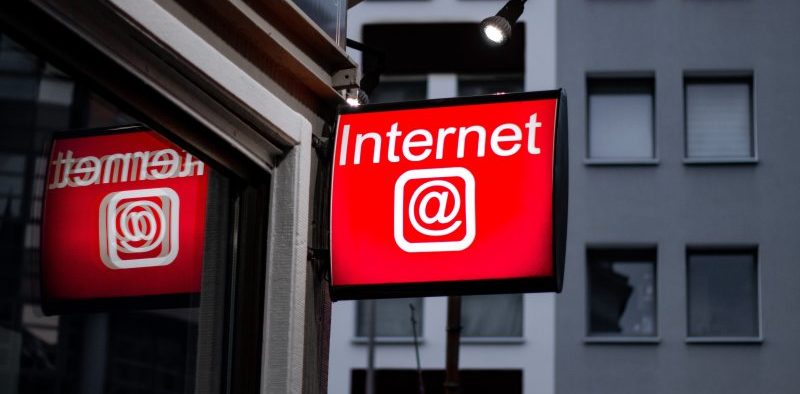What was behind Amazon’s falling profits in 2019, and how did other big online retail players perform? In this retrospective of the highs and lows of the year, learn which retailers excelled, and which ones looked like they might be struggling in the fiercely competitive online retail arena.
The Highs and Lows of Online Retail in 2019
As online retail has become such a massive catalyst for changes in supply chain and logistics thinking and practice over the last few years, I thought it worth greeting the New Year with a brief look at the ecommerce sector and how some of its players have performed in 2019.
For example, the seemingly unstoppable Amazon surprised pundits by reporting lower year-on-year profits in the third quarter of 2019.
Is it a sign that the Bezos profit machine is running out of steam, and how have other retailers fared in the race for e-commerce dominance? Let’s dive in and take a look.
So What’s With the Amazon Profit Decline?

Such is Amazon’s dominance of online retail, that every competitor is challenged to follow in the company’s footsteps, let alone pick at the edges of its market share. So when the world’s largest online retailer announces anything less than stellar quarterly results, speculation naturally turns to whether the bubble is set to burst.
It’s probably safe to say that it’s not about to happen yet, but, notably, Q3 of 2019 saw Amazon’s profits decline against the same period in the previous year.
Why? Well, the company is continuing, in general, to spend to continue to grow. More specifically, though, it has laboured under the expense of transitioning from two-day to one-day shipping as standard for members of its subscription offering, Amazon Prime.
Is One-Day Shipping a Step Too Far?

Logistics costs have increased substantially for Amazon as it delivers on its promise to cut Prime shipping times in half, while keeping delivery free for shoppers.
The leadership team admitted that spending on the initiative exceeded its original expected cost of $800 million in Quarter 2. In Q3, total logistics costs were up by a whopping 46% year-on-year, coming in at around $9.6 billion.
The move to expedite Prime shipping has impacted Amazon’s profits, while introducing several cost challenges. According to the company’s CFO, Brian Olsavsky, the main issues were:
- The costs of transitioning warehouses to support one-day delivery
- The necessity to increase inventory levels
- The need to move inventory around and adjust networks to be closer to customers
Oslavsky described the initiative’s impact as a “shock to the system” but insisted—as did Amazon founder Jeff Bezos—that the short-term pain would be worth enduring, due to the future gains to be yielded.
In the final analysis then, it would appear that Amazon’s financial-performance blip is neither a hint that the company is running into difficulties, or that there is any sign of a slowdown in online retail growth.
Who Else is Doing Well in Online Retail?
Aside from Amazon, some of the most effective online retailers in 2019, in the USA at least, were those that developed an ecommerce strategy leveraging their traditional, brick-and-mortar outlets. For example, general merchandise retailer Target, and consumer electronics giant Best Buy have been enjoying gains in online sales in 2019.

These two big-box chains have integrated online and traditional retail channels to offer consumers a range of ways to shop and receive their purchases.
With customers able to shop online and collect their items in a physical store, or to receive them as home deliveries direct from fulfillment warehouses, Target and Best Buy have overcome early ecommerce struggles to become much more successful.
Smart inventory strategies have undoubtedly helped them in this regard, too, as well as some intelligent marketing initiatives. It seems their improved results come partly from outmanouvring competitors slower to adopt a realistically omnichannel approach. They realized early on that turning brick-and-mortar into click-and-mortar is a sound strategy to stave off obsolescence in the high street.
Big Boxes Not Always Big Winners
Do pure-play ecommerce giants and big-box stores completely dominate the online retail world? Perhaps that’s the case from a global perspective, but there are indications in some geographies that smaller can be better.
A UK online retail study by Which revealed a trend in which several larger retailers consistently underperformed as regards product availability and customer service.
Big DIY chains B&Q and Homebase had a notably poor showing in the report, with high levels of customer complaints, and even globally renowned fashion brand Zara appeared near the bottom of the UK league table.

Meanwhile, smaller, specialized retailers such as Richer Sounds, Liz Earle, and Wex Photo Video were top of the pops in the UK consumer community, receiving glowing praise for the personal service they provide to online shoppers.
Online Pharmaceutical Retail Could be a Fail
Research efforts seem to indicate that the root causes of poor online retail performance in 2019 don’t always relate to operational strategies. There is evidence that in some sectors, such as DIY/home improvement and pharmacies, ecommerce doesn’t resonate with shoppers in the same way as, for example, electronics and fashion do.
As mentioned above, Homebase and B&Q are faring poorly in the United Kingdom, and across the Atlantic, Lowe’s and Home Depot too, are suffering from low ecommerce effectiveness.

However, the picture is even less encouraging for online pharmacies. Walgreens and CVS Caremark are both giant brick-and-mortar drug-store chains in the United States, but it seems consumers don’t like to purchase medication online with the same abandon as when shopping for other commodities.
Of course, Walgreens and CVS both sell other commodities in addition to pharmaceuticals. Still, those other products are available from general merchandise outlets online, and notably, from Amazon, making the competitive landscape challenging for pharmacies that sell them as peripheral rather than core offerings.
Logistics: A Critical Strategic Element for Online Retail Success
As I hope this brief appraisal of online retail in 2019 illustrates, there is a range of factors that play into online retail success—or lack of success. However, Amazon’s rare profitability setback provides a telling glimpse into the crucial part that logistics plays in the ecommerce formula.
Why Your Business’ Success Depends Upon Your Supply Chain































































Follow us on social media